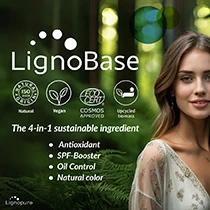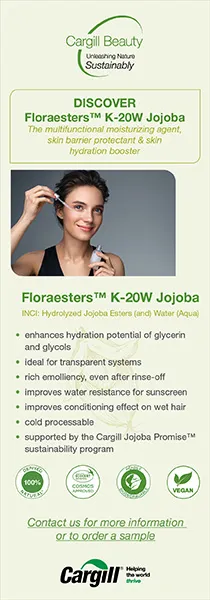Pollution barrier: Skincare active ingredients necessary to combat environmental aggressors

20 Mar 2023 --- Daily exposure to pollution particles can take a toll on skin health, leading to early signs of aging. Air pollution from exhaust fumes and smog, particulate matter, cigarette smoke and other toxins in the environment have an impact on skin appearance.
PersonalCareInsights delves into recent research in anti-pollution skincare to highlight potential formulation solutions for the beauty and personal care industry.
“Put simply, air pollution is a collection of particles and gasses that fill the air around us, both indoors and outdoors. Invisible to the eye, pollution is caused by many different things like industrial smog, gasses, smoke and even changes in weather. And when at a high level, it’s not only harmful to the planet but to our skin too,” says Kasia Tate, global head of R&D in Skincare and Makeup at The Body Shop.
“Many types of pollutants are known to cause oxidative stress. Oxidative stress is the term for when there’s an imbalance of free radicals and antioxidants on the skin. This can lead to common skin problems such as – dryness and sensitivity, premature skin aging and blemishes.”
Tate utilizes her expertise in organic chemistry and engineering to develop skincare and makeup formulations. She suggests that “a good protective routine doesn’t have to be a chore;” instead, it requires following a couple of steps in everyday skincare to maintain the skin barrier and reduce oxidative stress on the skin from environmental aggressors.
 Pollution can lead to common skin problems such as dryness, premature skin aging and blemishes.Skin health protection
Pollution can lead to common skin problems such as dryness, premature skin aging and blemishes.Skin health protection
Unilever Prestige brand Paula’s Choice details that the harmful effects of pollution can be combated with skincare products with APF – anti-pollution factor. “This indicates that the product contains a blend of antioxidants and skin-replenishing ingredients which help to reduce and counteract the visible effects of pollution,” the brand shares.
Paula’s Choice Defense line primarily aims to prevent skin damage caused by pollution.
“The Defense collection contains the essential products your skin needs to neutralize the negative effects of pollution. Each product contains an exclusive APF that shields skin from airborne pollutants, helping skin repair its stressed-out appearance, becoming even-toned, stronger and noticeably vibrant so you will see healthy, radiant skin now and for years to come,” the brand states.
Meanwhile, The Body Shop Edelweiss Liquid Peel and Edelweiss Daily Serum Concentrate are products touted to clear skin and protect against pollution. While the peel helps remove impurities, lifting away dirt, dust and grime from the skin, the light, fast-absorbing serum concentrate forms an invisible veil over the skin to help protect against indoor and outdoor pollution.
Global market researcher Innova Market Insights found that anti-pollution claims in skincare have grown by 14% within five years between 2017/Q4 – 2018/Q3 vs. 2021/Q4 – 2022/Q3. Of these product launches, Europe leads at 54%.
While more than half of the launches were for facial and neck moisturizers, aftershave is driving innovations.
“Glycerol was the most used ingredient for anti-pollution-based products and yeast extract is the fastest-growing ingredient,” the researcher shares.  Indian sandalwood oil has the potential to serve as an active ingredient in dermatology.
Indian sandalwood oil has the potential to serve as an active ingredient in dermatology.
Antioxidant and anti-aging
A recent research published in Cosmetics demonstrated that Indian sandalwood oil could potentially serve as a protective and anti-aging active ingredient in cosmetics and dermatology against environmental stressors.
“We described in this study a novel property of Indian sandalwood oil as a protective active ingredient against the detrimental effect of environmental stressors in vitro and on human skin ex vivo,” the authors elaborate.
The antioxidant efficacy of Indian sandalwood oil using a cellular antioxidant assay was explored. The test substance “significantly” reduced the level of reactive oxygen species induced by the peroxyl initiator – a free radical generating compound.
The Indian sandalwood oil was also shown to subsequently protect HaCaT cells against the oxidative stress induced by environmental stressors such as blue light and cigarette smoke. Its protective effect against the detrimental impact of pollution (cigarette smoke and ozone) was also monitored using a more complex model – human skin explants.
“The results presented in this study suggested that Indian sandalwood oil has the potential to serve as an active ingredient in dermatology for protection against environmental stressors in addition to its already existing fragrance and aromatherapy applications,” the authors write.
“Following more in-depth studies, Indian sandalwood oil may also serve as a promising candidate in its use as a multipurpose ingredient in cosmetics care.”
By Radhika Sikaria












